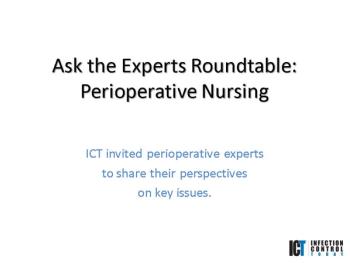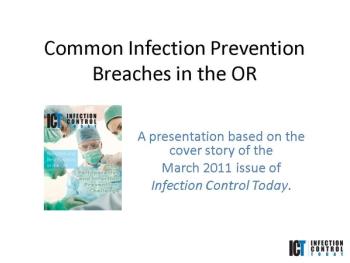
HAIs
Latest News
Advertisement
Advertisement













Infection prevention and control departments have responsibility and oversight for implementing and monitoring strategies that help reduce infection risk throughout healthcare facilities. Infection preventionists are often asked to weigh in on strategies that are unfamiliar to them. In the perioperative setting, a proven and effective approach in helping fight surgical site infections is maintaining normothermia.



ICT presents its 2011 survey results highlighting common infection control-related breaches in the operating room.









Advertisement
Advertisement
Trending on Infection Control Today
1
IP LifeLine: A Blessing in Disguise; Navigating a Job Loss in Infection Prevention
2
More Than One Path: Why Infection Prevention Needs the Voices of Non-RN Professionals
3
Nasal Microbiome Study Redraws the Map of Staphylococcus aureus Carriage
4
Copper-Embedded Textiles Show Promise in Reducing Microbial Burden and Supporting Infection Control
5

